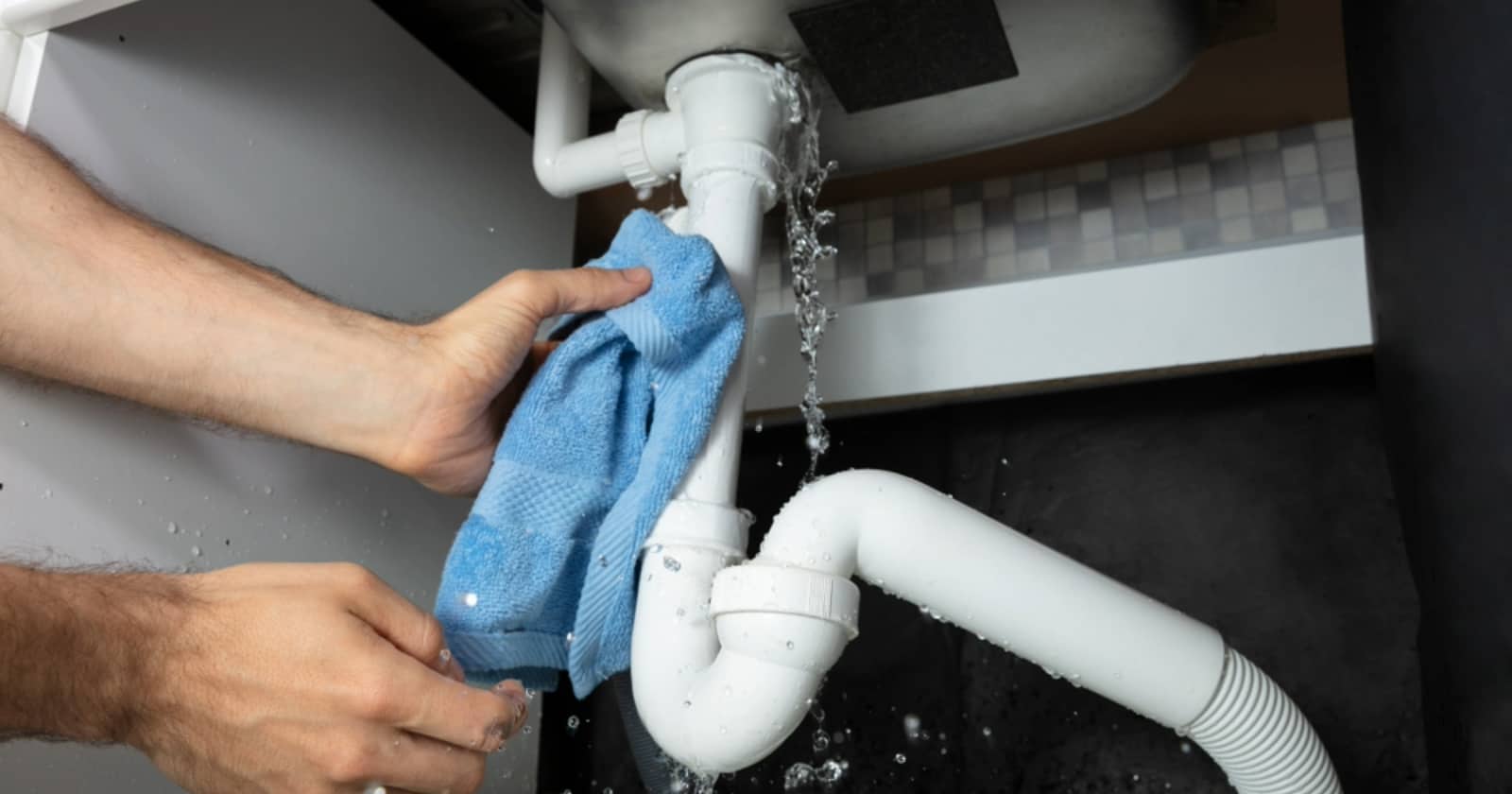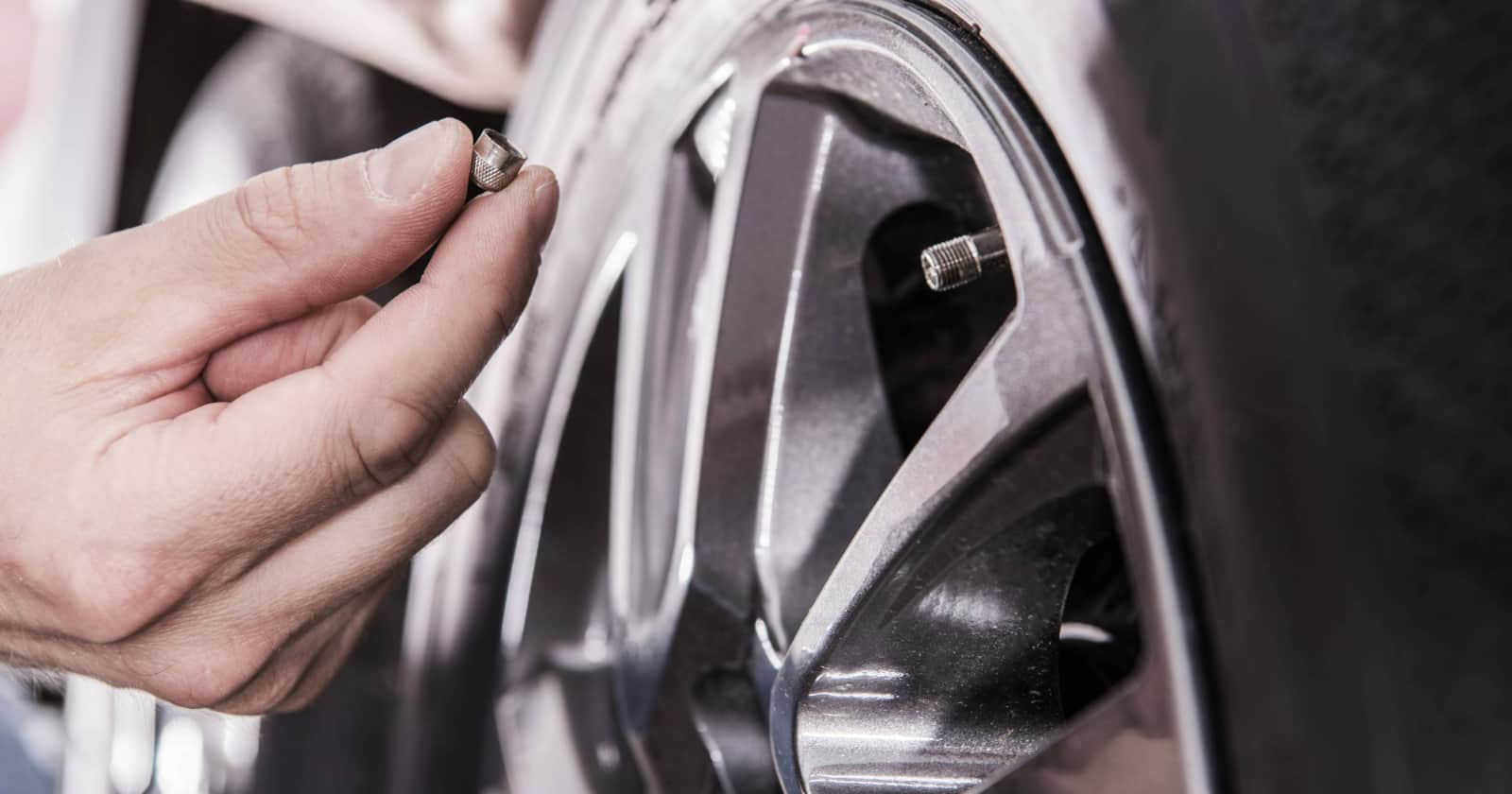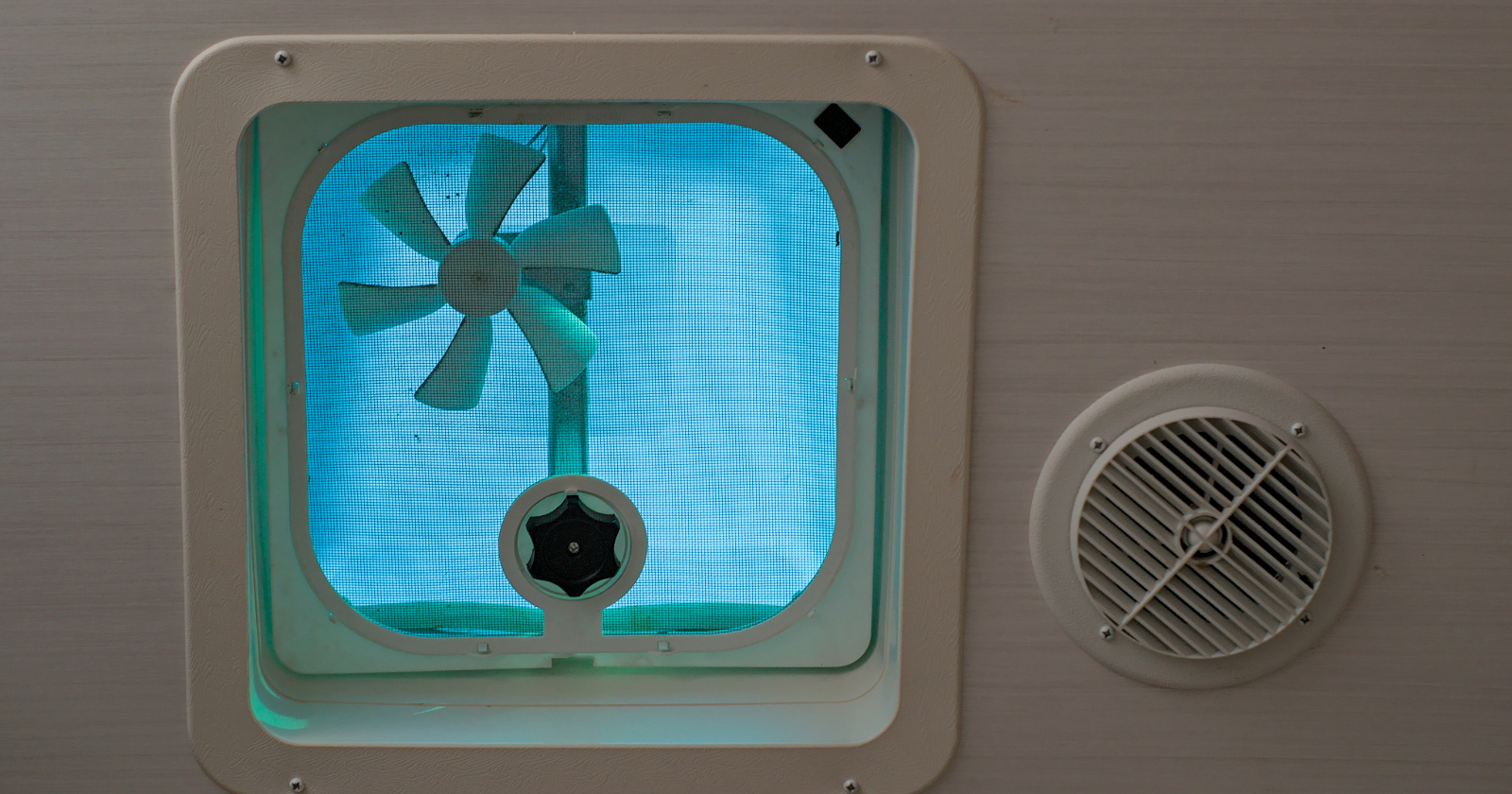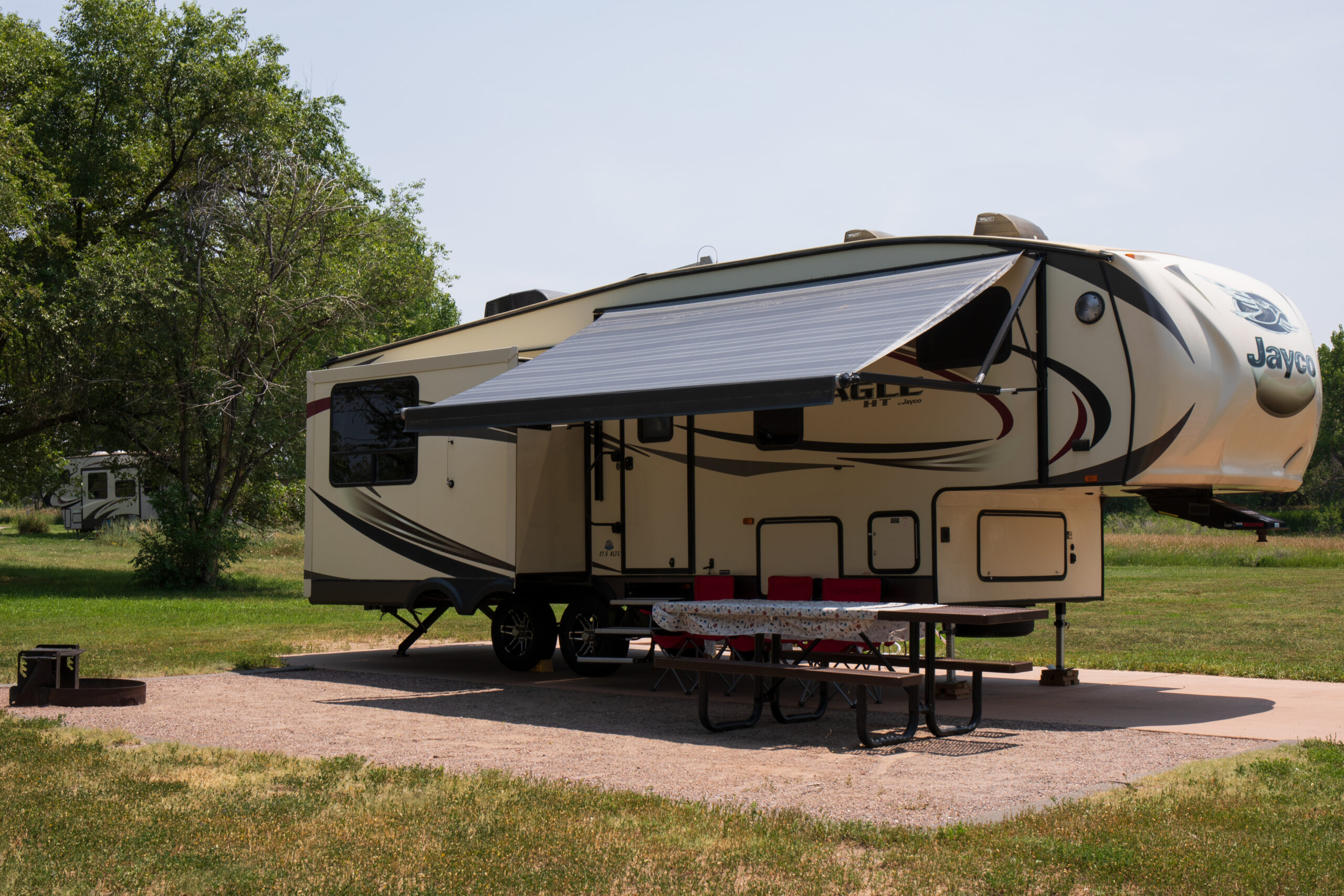
A Complete Guide To DIY RV Awning Repair
RV awnings can offer shelter from the rain, shade from the sun, and a bit of extra living space. Awnings provide so many benefits that some RVers will pay extra money to have an awning installed on an RV without one.
The problem with RV awnings? They have a tendency to become damaged. Fortunately, RV awning repair is totally doable in a large number of cases. This means that even if your awning does get damaged during a camping trip, you’re likely to have it fixed in no time.
Read on to learn all about RV awning repair.
Why do your own RV awning repair?
First, let’s touch on why you might want to do your own RV awning repair rather than taking your rig to the shop. There are actually a few different reasons for this, and each and every one is completely legitimate. Combine these reasons and it begins to feel silly to even consider a trip to the repair shop.
Reasons to DIY your RV awning repair include:
Save time
Taking your RV to the shop might mean leaving it for months before the repairmen get around to it. This takes away from valuable camping time, especially during peak camping season.
Save money
Not only is a trip to the RV repair shop time-consuming, it’s also incredibly expensive. Choosing to make your own RV repairs can be a huge money saver.
Fix it before more damage occurs
If your awning becomes damaged in the middle of a trip, leaving the hole or tear to flap in the wind could cause it to rip even more, leading to worse damage and a more difficult repair.
Types of RV awning damage
Clearly, it makes the most sense to do your own RV awning repair, and the first step in doing this is figuring out what kind of damage you’re dealing with. There are several different kinds of RV awning damage that can occur. These include:
Small holes and tears
Small holes can be so small you can’t even see them. Usually, you won’t even notice you have small holes until rain starts leaking through the awning. Small tears, on the other hand, are almost always noticeable right away.
Fortunately, both types of damage are easy to repair as long as the patch job is done in a timely manner.
Large holes and tears
Large holes and tears are a much bigger problem than small holes. These often render the awning completely useless until they are repaired, and sometimes cannot be patched, meaning the awning fabric must be replaced altogether.
Frame damage
Another issue that can come up is frame damage. This is usually caused by high winds, excessive rain, or running into something while driving the RV. Unfortunately, frame damage is not repairable, and if your awning frame is damaged, you will have to replace the entire thing.
How to repair your RV awning
Assuming your issue is small- to medium-sized holes or tears, repairing your awning isn’t too difficult and can definitely be done in an afternoon. Follow the steps below to patch your awning fabric and get on with your camping fun.
Remove the awning
First, you’ll need to remove the awning from the RV. Make sure you follow the manufacturer’s instructions when doing this in order to avoid further damage. Once it is removed, lay the awning out flat on the ground.
Clean the area
Find every hole and tear and carefully clean the area around each one with a water-based solution. Make sure to allow the cleaned areas to dry completely before moving on.
Patch small holes and tears with repair tape
Patch holes and tears using awning repair tape. Carefully apply a strip of the tape over the hole or tear on one side of the awning, using your finger to smooth out any bubbles. Repeat this process on the opposite side of the awning so both sides of the damage are covered.
Rehang the awning
Once everything is patched up and in place, rehang the awning and enjoy the shade and rain protection it offers!
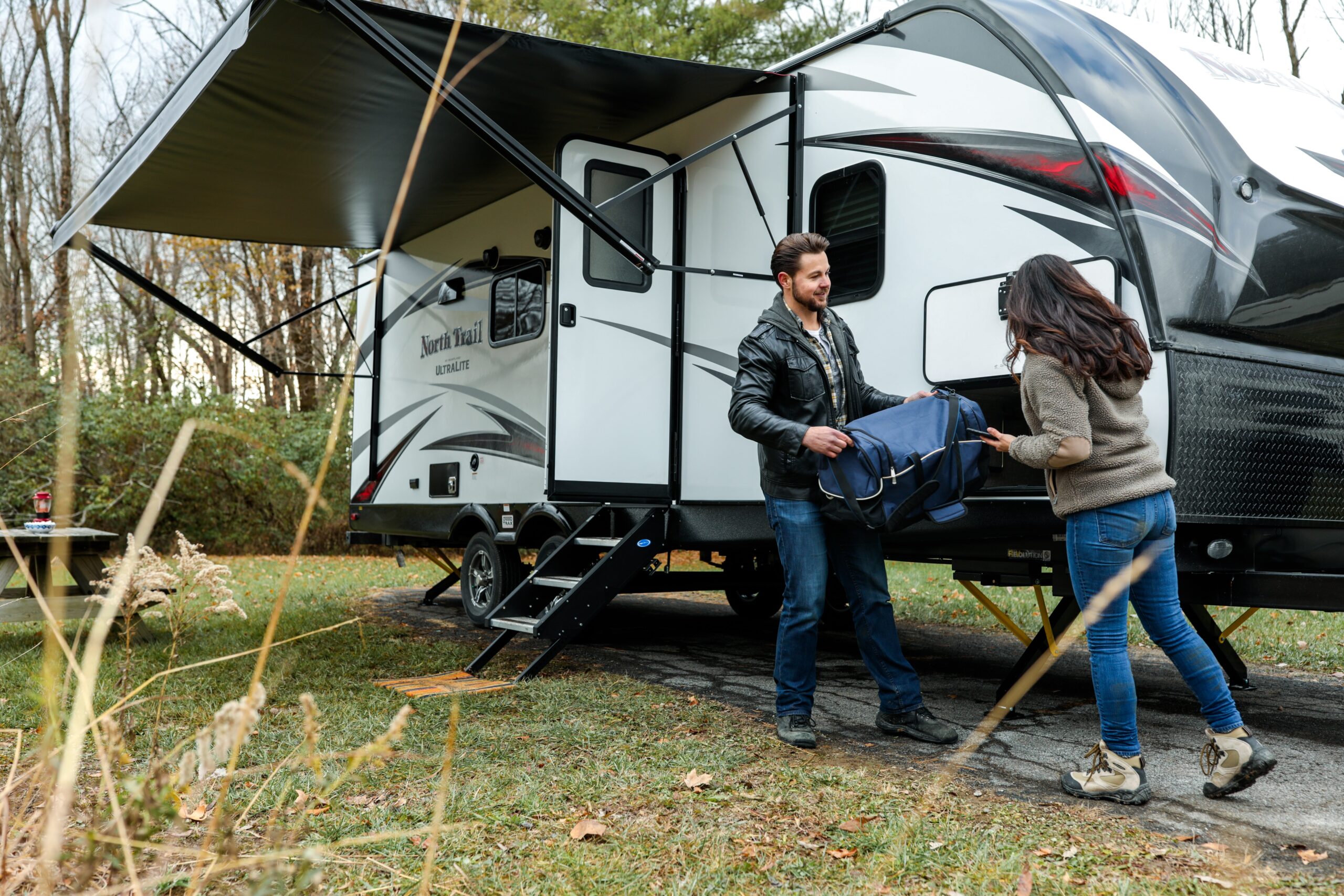
Avoiding future RV awning damage
Once you’ve done your RV awning repair or replacement, you’ll want to ensure it stays in good condition for as long as possible. While no awning will last forever, there are things you can do to extend the life of yours.
Pull it in for wind and rain
Wind and heavy rain can take an RV awning out in no time. Make sure your awning doesn’t fall victim to a rainstorm by always pulling it in when the wind or rain pick up.
Avoid extended periods in the sun
Too much time in bright sunshine will start to wear on your awning fabric. Avoid extended periods of direct sunlight whenever possible.
Keep it locked while driving
RV awnings can sometimes unfurl while driving down the highway, especially if there are high winds. This can cause significant damage to the awning and its hardware. You may want to consider a travel lock for additional security; it can also help quiet the rattle of the awning while driving down the road.
Brush it off before rolling it up
Rolling up a pointy stick in your awning fabric is sure to do some damage. It’s a good idea to always brush your awning off before rolling it up when breaking down camp.
Clean your awning regularly
Mold, mildew, and other crud building up on your awning fabric isn’t good for the life of your awning. Make sure to clean your awning often and let it dry completely before rolling it up.
As you can see, many RV awning repairs are easier than you might think, and keeping your awning in good condition is a cinch. Why not get outside and get yours repaired today so you can enjoy it on your next camping trip?
For more tips on RV awning repair, check out this video from Bucks Garage:
Make sure you keep track of all your RV maintenance and repairs with an online tool such as RV LIFE Maintenance. Not only can you keep all of your documents in one place, but you’ll also receive timely reminders when maintenance is due to help you avoid costly repairs and potentially serious accidents.

